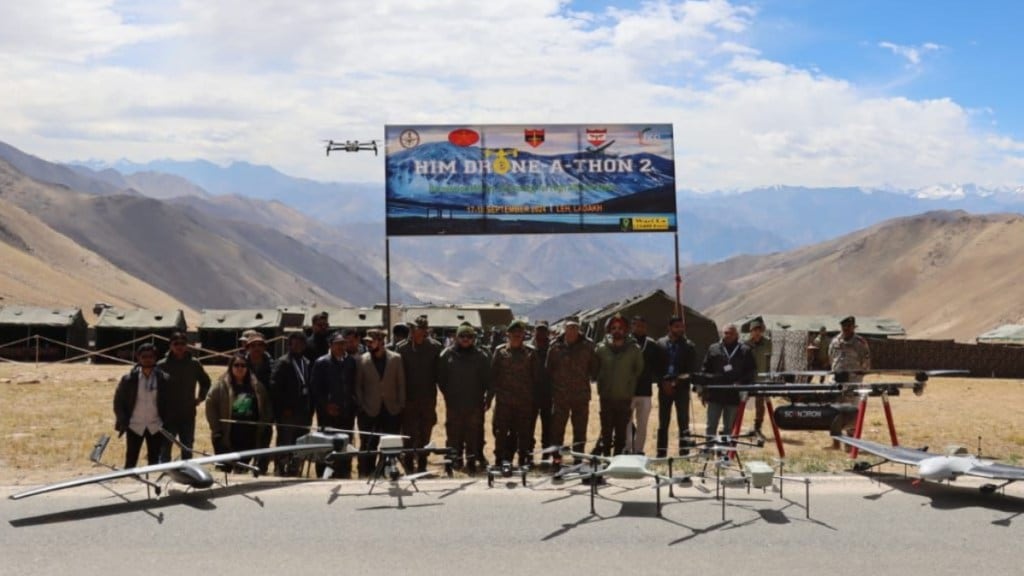The Indian Army is stepping up its efforts to enhance security along the Line of Actual Control (LAC) in eastern Ladakh through the use of advanced drone technologies. As part of this initiative, the Army recently hosted the ‘Him-Drone’ event in collaboration with the Federation of Indian Chambers of Commerce and Industry (FICCI) on September 17-18, 2024. The event took place at an altitude of 15,200 feet at Wari-La, a mountain pass southeast of Leh.
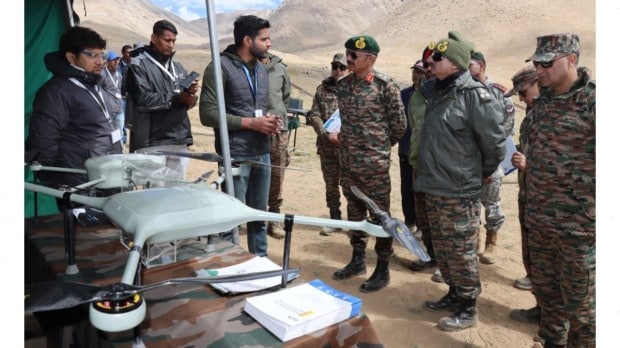
The Importance of Drones in Modern Warfare
Drones have revolutionized military operations in recent years, proving their effectiveness in conflicts and their roles have expanded to include surveillance, logistics, precision strikes, and electronic warfare. As a result, the Indian Army is increasingly relying on drones to enhance its operational capabilities, especially in high-altitude areas like Ladakh, where the terrain is unforgiving, and weather conditions are extreme.
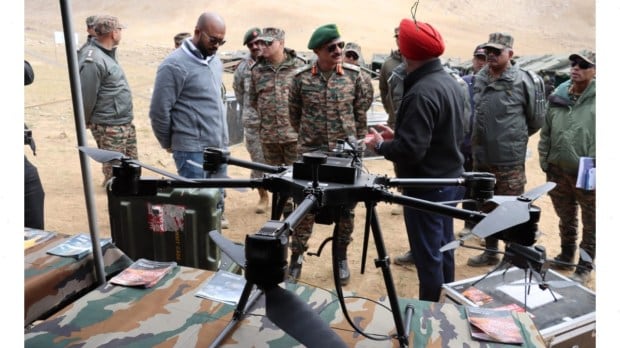
The Army’s need for drones stems from the establishment of the Aviation Brigade in Leh in 2021. This brigade requires drones for tactical operations—quick response missions within a defined area—to enhance situational awareness and security along the LAC.
Five Types of Drones Under Evaluation
During the ‘Him-Drone’ event, the Army evaluated five specific types of drones, each tailored to meet different military requirements:
Surveillance Drones: These drones are crucial for providing real-time intelligence and monitoring enemy movements along the LAC. Surveillance drones will help the Army maintain continuous oversight of critical areas in Ladakh.
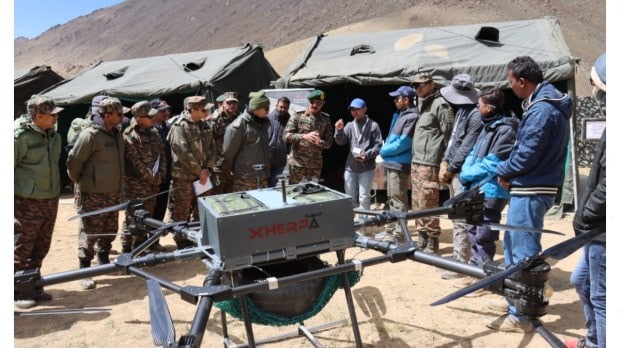
Loitering Munitions: Also known as ‘suicide drones,’ these are designed to hover over a target area before striking, offering precision in targeting enemy installations and assets.
Kamikaze Drones: Similar to loitering munitions, kamikaze drones are pre-programmed to self-destruct by crashing into enemy targets, delivering a lethal payload.
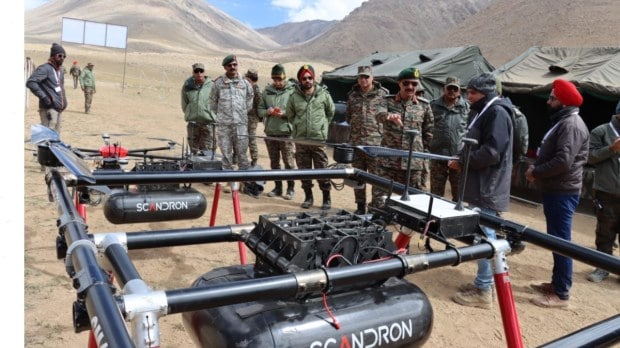
Logistics Drones: These are designed to transport essential supplies, such as ammunition or medical equipment, across difficult and inaccessible terrains. Logistics drones will significantly enhance the Army’s ability to supply troops in remote areas of Ladakh.
Electronic Warfare Drones: These drones play a crucial role in communication and electronic intelligence’, capable of intercepting enemy communications and disrupting their electronic systems, providing a significant tactical advantage.
Challenges of High-Altitude Operations
Operating drones in Ladakh presents unique challenges. The `rarified atmosphere’ at high altitudes reduces the lift generated by the drone’s rotors and negatively impacts engine performance. Additionally, high winds, rapid ice formation, and freezing temperatures lead to faster battery depletion and operational inefficiencies. The ‘Him-Drone’ event tested these drones’ ability to perform in such harsh conditions, as reliable high-altitude operation is essential for the Army’s success in the region.

Ensuring Indigenous Development
As part of India’s broader vision of Atmanirbhar Bharat (Self-Reliant India), the Army is focused on procuring domestically developed drones to minimize dependence on foreign components. A key concern is the presence of Chinese parts in some domestically manufactured drones, which could pose security risks by potentially allowing data to be transferred to external devices. To address this, the Northern Command and the Army Design Bureau have set up a `technical evaluation committee’ to ensure that no critical components of Chinese origin are used in the drones selected for deployment.
The Future of Drone Warfare in Ladakh
The ‘Him-Drone’ event is a pioneering step towards enhancing India’s military capabilities in high-altitude areas. The Army plans to shortlist several drones for procurement based on their performance during the event, while recommending improvements for others. The event is part of a broader effort, with the ‘Him-Tech’ event scheduled for September 20-21, 2024, aimed at harnessing military technologies specifically suited for high-altitude operations.
Drones are set to play an increasingly important role in India’s military strategy, especially in the challenging terrain of Ladakh. By investing in indigenous drone technology and ensuring its suitability for extreme environments, India is positioning itself as a key player in the global drone industry, while also bolstering its defence capabilities against threats along the LAC.
